The United States’ long wait for a full-time Formula 1 driver ends this year as Formula 2 graduate Logan Sargeant joins Williams.
He is one of five drivers to have raced using an American licence in F2 – although one of those was Mexico’s IndyCar star Pato O’Ward – and only the third person from his country in the last 40 years to have come through F1’s support series to make it to the top flight.What has stood in the way of the top US junior single-seater talents, particularly those who have raced in Europe or found themselves in contention for an F1 seat, from making it to the world championship?
The European road to F1 hits a dead end
The 2007 European Grand Prix at the Nurburgring was not only notable for its thrilling battle for victory between Fernando Alonso and Felipe Massa, the chaos caused by opening lap rain or Markus Winkelhock leading on his debut. It was also the final race for a full-time American F1 driver as Scott Speed’s last grand prix before his replacement by Sebastian Vettel at Toro Rosso.
But as F1 lost its only American racer, there were talented young drivers from the USA who looked to pursue a single-seater career over the Atlantic.
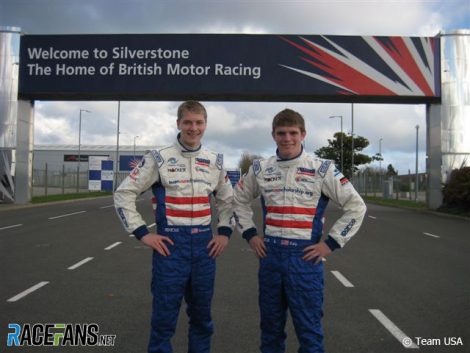
Daly, son of Irish former F1 and CART driver Derek, hopped back and forth between the continents during his first years in cars.
He learned the basic skills in America, then put them to the test by contesting England’s Formula Ford Festival at Brands Hatch and Walter Hayes Trophy at Silverstone in 2008 as a Team USA scholar alongside fellow F1 aspirant Josef Newgarden.
Daly finished sixth at the Festival, which Newgarden won, then he won the Walter Hayes Trophy while Newgarden finished 14th. Their results in the two biggest Formula Ford events in the world announced that the pair had well and truly arrived in Europe.
The next two years were spent in America for Daly, as he contested the third level of single-seater racing over there in the Pro Mazda championship. He dominated the series in his second season, and then moved back to Europe for the next four years.
Advert | Become a RaceFans supporter and
In addition to joining F1’s support bill for 2011 in GP3, Daly also stepped up to IndyCar’s primary feeder series Indy Lights and won in a part-time campaign there. His time in Europe, however, was less fruitful, scoring points only thrice. But he finished sixth in his sophomore GP3 season.
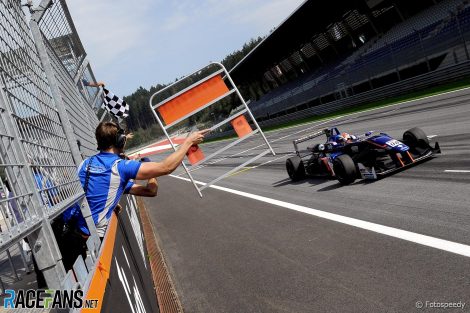
Herta also made his first car racing steps at home, making it up to USF2000 before switching to Europe and being part of the illustrious 2015 British Formula 4 grid that also included Lando Norris.
He won four times en route to third in the standings, while team mate Norris won the title, and then stepped straight up to Formula 3 in Euroformula. Again he won four times and finished third in the points table, and was still only 16 years of age. The next logical step was F2.
While he was old enough to make the step, it would have been a big ask in terms of budget. Instead, he was eyed by George Steinbrenner IV for his new Indy Lights team being co-run with Andretti Autosport.
That formed a direct line to IndyCar via Andretti, and would cost significantly less than staying in Europe, so Herta went back to America to become a young star back in his home nation as well. At least, for now.
Advert | Become a RaceFans supporter and
When career moves backfire
As mentioned, Newgarden made a great start to his European racing career after learning the basics in the USA.
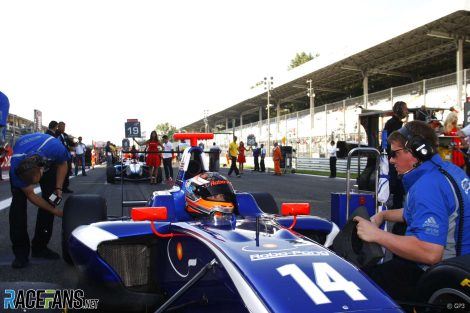
The momentum was there for Newgarden to make the next step, but the funding for a move to British F3 fell through. Instead, he made an even bigger jump up to GP3 courtesy of a late deal with Carlin – but it almost cost him his racing career.
Newgarden finished 18th in the standings, being plagued by unreliability and only rarely having the pace to fight for points, only scoring four times. His reputation and ability to fund his racing was diminished, but then a lifeline came to keep him racing – with another big step up the ladder.
Sam Schmidt brought Newgarden into his Indy Lights team for 2011, and his faith was rewarded with five wins and the Indy Lights championship. A multiple title-winning IndyCar career then beckoned.
Surprise F1 contenders
Herta’s F1 dream didn’t end in 2017 when he headed to Indy Lights, as he actually became a serious contender for a race seat in Formula 1 last year.
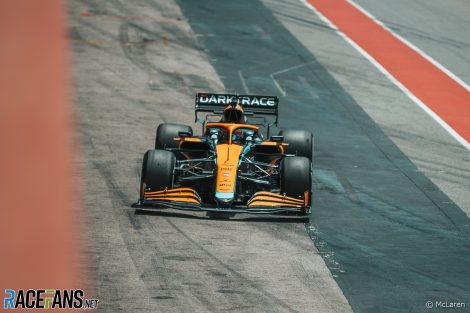
It was an issue primarily brought about by a very closely-fought 2022 IndyCar season where, despite two pole positions, a race win and one other podium, Herta finished tenth in the standings. That earned him just a single superlicence point. At one stage he considered returning to junior racing to earn points, and he will need to finish in at least the top four of IndyCar this year to qualify for a licence for 2024.
Another American who ended up in surprise F1 contention, but also never made it, was JR Hildebrand. He was another to gain British mileage in his formative years in cars, and after winning the 2006 USF2000 title jumped all the way up to the rival Atlantics and Indy Lights series.He finished seventh in the former, and was fifth in the latter in his rookie campaigns. Hildebrand stayed in Indy Lights a second year and won the title, and through a chain of acquaintances and connections that eventually included then-Force India boss Vijay Mallya, he managed to get himself included in a simulator shootout hosted by the team’s technical partner McLaren that would reward the winners with seats in F1’s first ever young driver test.
Hildebrand beat an A1GP champion and a GP2 race-winner to earn his F1 test debut, and the stakes were raised when the test was turned into a shootout between himself and DTM star Paul di Resta to be Force India’s reserve driver for 2010. Although he lost, the team was willing to help fund a move to GP2 for Hildebrand as he had no IndyCar seat lined up either.
That didn’t come to fruition, but Hildebrand eventually did make his IndyCar debut and infamously lost the 2011 Indianapolis 500 at the last corner of the race on his seventh start in the series, to Dan Wheldon. He still races part-time in the series today.
Advert | Become a RaceFans supporter and
Great expectations not met
Many British and German drivers have been called the next Lewis Hamilton or Michael Schumacher over the last decade-and-a-half, with a string of top karting results or success against older opposition thrusting very young drivers into the spotlight.
While it is of course very difficult to live up to such expectations, some drivers and their families or management choose to run with the comparisons. When he was 11, Santino Ferrucci had a 3,000-word feature called ‘The Great Santino’ dedicated to him in GQ, one of the world’s most-read men’s magazines.
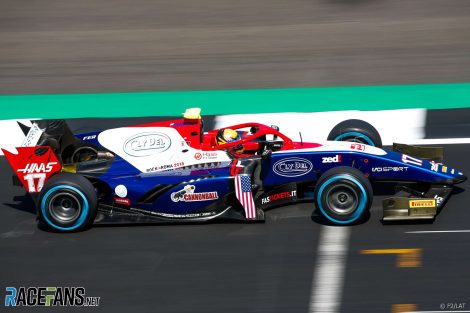
Once Ferrucci made it to cars, he wasn’t one of the standout drivers in any of the competitive series he raced in and the very highest expectations had been looming over him throughout. His self-belief was undamaged even in series where the fight was to finish in the top ten rather than get podiums and wins, and after reaching F2 his F1 dream then ended amid controversy following a clash with his team mate at Silverstone.
But when he was handed a chance to race in IndyCar, somewhat to redeem himself, Ferrucci demonstrated a level of skill that caught the whole paddock’s attention. Although he’s yet to get a podium, he’s earned himself a full-time seat in the series again for 2023.
Advert | Become a RaceFans supporter and
All speed, no budget
Puerto Rico is an unincorporated territory of the United States, and the Caribbean island is where Felix Serralles comes from.
He impressed at every level of junior single-seaters he entered, but simply never had the backing that would send him to F1 or IndyCar. And it’s the same with many drivers, who don’t even try the higher rungs of the European ladder because they know the American equivalent is cheaper and therefore they can compete up to a higher level before the money runs out.
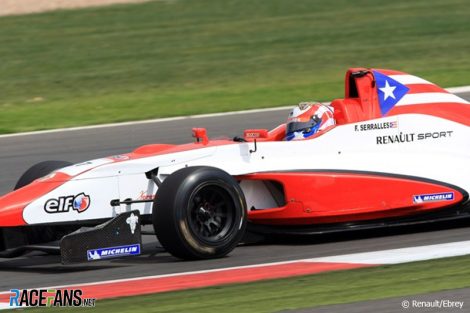
With Fortec Motorsports he came 11th in the Eurocup, against the likes of Carlos Sainz Jnr and Stoffel Vandoorne, and made the podium in the UK championship.
He stayed with the team as he stepped up to F3, winning in the Toyota Racing Series in the winter before making his F3 debut, and several strong wins helped him come third in the British championship. This time he beat Sainz, and was up against several other future F1 and IndyCar stars, then he spent a third year with Fortec by heading to FIA European F3.
Advert | Become a RaceFans supporter and
But with each step he was going up against bigger teams, particularly when he moved to Team West-Tec for his second European F3 season in 2014, and impressive performances were harder to spot when he was never in podium battles and also getting involved in too many incidents.
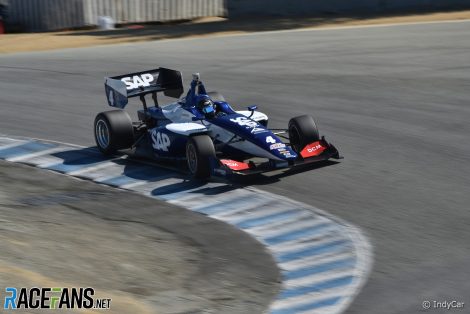
Although he then raced and won in Indy Lights for two years, and tested in IndyCar with Andretti, no sponsors were lining up to fund a route to the top.
Following Indy Lights, Serralles spent two seasons in GT3 sports cars with crack Mercedes team AKKA ASP before making the surprise switch to joining the US Army. He hasn’t raced since.
Become a RaceFans Supporter
RaceFans is run thanks in part to the generous support of its readers. By contributing £1 per month or £12 per year (or the same in whichever currency you use) you can help cover the costs of creating, hosting and developing RaceFans today and in the future.
Become a RaceFans Supporter today and browse the site ad-free. Sign up or find out more via the links below:
2023 F1 season
- FIA president cleared of alleged interference in two 2023 races
- First week viewing figures for new Drive to Survive season fall again
- Max who? Drive to Survive season six prefers its favourite faces
- RaceFans’ complete 2023 season review
- The F1 drivers who pulled off the 10 biggest charges through the field in 2023




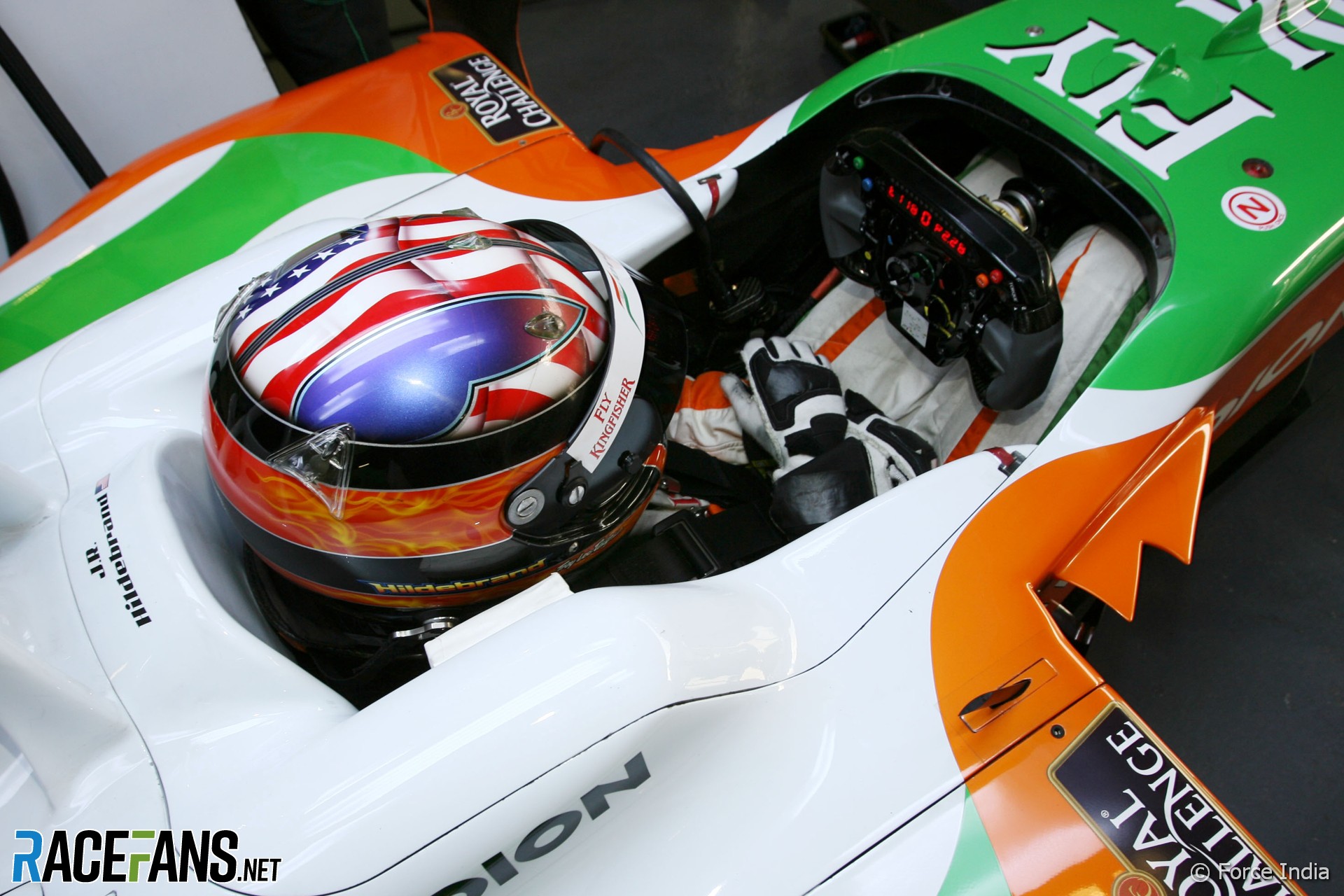
Proesterchen (@proesterchen)
26th January 2023, 8:51
There seems to be a common thread here, with select American talent showing enough promise to go to Europe, ultimately failing to show enough there and then going back to the US and being at least somewhat successful in Indycar.
Which is ultimately not a good look for the talent, Indycar, and anyone else competing there.
MichaelN
26th January 2023, 18:43
Maybe, but another thread running through all these stories is money, or lack thereof. Money buys success in most sports, and it’s a rare sport indeed where piles of cash can’t outshine innate ability (one obvious examples of such would be long distance running). But motorsport is among the worst sports for this; money and connections can make or break a career.
Whether or not the level in F1 is that much higher than in Indycar is debatable. For one, F1 seems to have more sons-of winning not just races but even titles than Indycar has.
Proesterchen (@proesterchen)
26th January 2023, 19:57
That’s objectively not true:
You had father-and-son Andretti and Unser both winning CART titles (among others), while only Graham and Damon Hill did the same in Formula 1.
MichaelN
26th January 2023, 20:21
I didn’t say father and son, but in that specific case it’s indeed true that Indycar has two sets to F1’s one.
Point being, F1 has had numerous sons-of former F1 drivers winning races and even titles. F1, and getting to F1, is so ridiculously expensive that money and access (which can substitute for money) often trump skill and talent. As such, it’s no shame for a driver to never make it to F1, nor does it mean the level of the series in which they end up is somehow lower than F1. Aside from a few outliers (guys like Clarck, Prost, and such) there isn’t much reason to think that the level of drivers in F1 is meaningfully higher than in other top level motorsport, be it Indycar, international sportscars, or rally.
Proesterchen (@proesterchen)
26th January 2023, 23:59
Hill, Villeneuve, Verstappen. That’s 3 in 70+ years. (and I’m eagerly awaiting calls from Mr Andretti and Mohammed ben Sulayem on Mr Andretti’s behalf, wanting to see him included despite not qualifying for this elusive list)
btw: As the Rahals also qualify for this, there have been at least 3 race-winning “sons-of” in Indycar, too. (that’s from the top of my head, I’m not sure if there were others)
When it comes to “sons-of” winning Championships, I think we can agree that there was at least a bit of talent and skill involved in their success.
In fact, there is every reason to believe that most top talent in Indycar is not up to par with top talent in Formula 1. It’s been tried, and we’ve seen the results.
Marcus Ericsson has won 3 Indycar races, ffs.
S
27th January 2023, 5:13
Which can also be used as evidence to prove (as if there were any doubt) that F1 is a car series where the most important factor in a driver’s career is the team they drive for and the equipment they have access to – whereas Indycar is very much more a driver series where opportunity for success comes mostly from the driver. Same goes for all other spec or near-spec series.
Ericsson’s never had the privilege of access to top-level machinery in F1, and his success in Indycar shows that he isn’t a terrible driver at all, but is highly competitive with guys who’ve been specialists in those cars for almost their entire careers.
Additionally, anyone who knows anything about competitive driving will confirm that switching from a faster/lighter car to a slower/heavier/less sensitive car is easier than the opposite. Everything happens slower than they are already accustomed to. That’s not talent, but an environmental factor – and one that most drivers will adjust to quite quickly.
It’s well beyond time to accept that F1 isn’t (and never has been) the sole domain of the ‘best’ drivers in the world – and that there are, in fact, massively talented drivers in every professional motorsport series.
Quite likely more so in series other than F1 – given the additional barriers drivers face on that career path (money being the most obvious and important).
Proesterchen (@proesterchen)
27th January 2023, 15:14
First off, a couple of embarrassing omissions from the list of “sons-of” that I’ve managed to drudge up from the depths of my memory:
The Rosbergs in Formula 1, the second and so far last father-and-son World Champions.
And the Hertas in Indycar, another “son-of” a winner winning in the same series.
In Formula 1, Marcus Ericsson beat Kamui Kobayashi on best finishes (both 0 points), but then got beat by Felipe Nasr (2x), Pascal Wehrlein (1x, and with WER sitting out 2 GPs), and Charles Leclerc. (1x)
That’s the beauty of using him as a measuring stick, he had 5 seasons in Formula 1 and came up against middling, good and top talent in the process.
That he now “is highly competitive with guys who’ve been specialists in those cars for almost their entire careers” is really all you need to know how those two driver pools compare.
S
27th January 2023, 16:02
It’s almost like you didn’t even read my last comment.
And F1 team-mate comparisons are about the least useful and most unreliable of all.
Proesterchen (@proesterchen)
27th January 2023, 16:29
If that’s your true opinion it’s clear that we lack enough of a shared reality to engage in meaningful discourse.
S
28th January 2023, 0:41
I’m pretty confident I’ve experienced and witnessed enough motorsport (of which F1 is only a small part) in my life to make a well-informed judgement.
But you enjoy your ‘reality.’
wsrgo (@wsrgo)
27th January 2023, 15:34
@proesterchen Mate you forgot the Rosbergs.
Proesterchen (@proesterchen)
27th January 2023, 16:16
@wsrgo
Indeed I did, thanks for bringing them up. 👍 (i had the same epiphany just a few minutes earlier and added the Rosbergs and the Hertas, who I had also forgotten, to the list in a reply above)
wsrgo (@wsrgo)
27th January 2023, 17:37
@proesterchen Welp sorry, I didn’t see your follow-up comment.
Proesterchen (@proesterchen)
27th January 2023, 18:46
@wsrgo
No worries at all, it was buried deep in a comment thread anyway and I genuinely appreciate being corrected when I make a mistake or miss a fact! 👍
Qeki (@qeki)
26th January 2023, 10:19
I’m not sure but I think the only time an american driver has started a race in Williams was Mario Andretti in 1982 in Long Beach
Warner (@warner16)
26th January 2023, 10:44
The 2015 Brazilian Grand Prix was actually the last time an American drove in an F1 race, Alexander Rossi, rather than Scott Speed at the 2007 European Grand Prix.
hunocsi (@hunocsi)
26th January 2023, 11:00
The article says full-time driver, which Rossi wasn’t really, although it’s weird that he’s not mentioned anywhere, since his road to F1 was a bit similar to other drivers mentioned, but with just enough backing and just enough success to gain a backmarker seat.
EJRD
26th January 2023, 19:08
Serralles is a important name in Puerto Rico. They the owner of Don Q one of the biggest rum in the island. I guess there a difference in Puertorrican money and world money.
Placid (@placid)
27th January 2023, 2:15
That was the big surprise watching Serralles becoming a soldier. And being a soldier, he has to completely go incognito due to National Security. Looks that he had to follow the late Pat Tillman.
He could use any skills that the Army will provide him whether he will take over his father’s business or become a race team owner.
Malith
27th January 2023, 6:05
When did Conor Daly won an Indycar race?